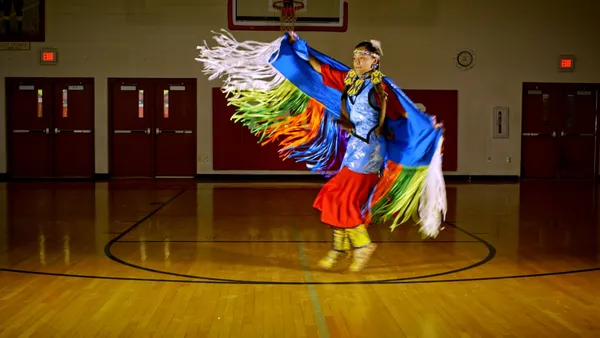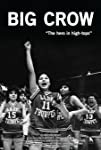Eye For Film >> Movies >> Big Crow (2022) Film Review
Big Crow
Reviewed by: Jennie Kermode

It has become fashionable, in the modern age, to dismiss the notion of heroes, or to consign them to the fantasy realm, stepping away from the great man theory of history to focus on technological developments and broader social movements as instigators for change. The fact remains, however, that in marginalised communities, the impact of individuals who choose to step up and fight for others can be considerable. If SuAnne Big Crow had lived, it seems likely that people all around the world would have known her name. This documentary goes a little way towards correcting matters by looking at what she had achieved by the time she was just 17-years-old.
“We are Crazy Horse’s people,” say the Oglala Lakota people living on Pine Ridge reservation in South Dakota today. This is the land where Sitting Bull was born, a land with a proud history, and one which escaped the attention of European settlers for some time because of its mountainous terrain – until gold was discovered there. That meant death for anyone seen as being in the way. In an early scene in this film, a young man shows us the cemetery where those who were massacred at Pine Ridge were dumped in a single grave. Since then the land has been bought by Christians who have built a church and covered it with crosses, in an attempt to erase the beliefs of the dead. Nevertheless, he expects that he will be buried there himself.

For most of the reservation’s history, practising traditional religious beliefs was against the law. This contributed to a deep cultural malaise, exacerbated poverty, by mass unemployment and heavy use of drugs and alcohol as a coping device. At the core of it was a sense of hopelessness. Nobody who grew up there expected to be accepted into wider society or achieve anything in life. Then along came SuAnne, who devoted herself to playing basketball, becoming not only one of the best players in the state but one of the best in history, and everything changed. Simply having a role model gave people a different sense of themselves. Director Kris Kaczor speaks to people who grew up alongside her and remember the way she influenced them at the time, as well as teenagers still excited by her legacy – especially those who play basketball themselves.
“I find hope in a basketball,” says one teenage girl, training in the street. It could get her off the res. it could give her a future. She knows it’s possible because SuAnne did it. People say that she plays in a similar way. But sport isn’t all of it. An older woman remembers how, when the team was preparing to go out onto the court for a match, they were met with jeers, imitation war-whooping and other racist taunts. They were afraid to leave the changing room, but SuAnne went out there and performed a traditional dance, silencing the aggressors, who didn’t know how to respond to that kind of confidence. She showed people that being Oglala was something to be proud of, that they didn’t need to internalise the stigma placed on them by others and that they deserved better.
SuAnne’s legacy isn’t just inspirational, but physical. The res now has a community centre, called Happytown, based on her idea and brought about through her political influence. Crucially, it’s not just a social space but a space where young people can work, giving them vital early skills training which increases their chances of finding employment in the outside world. A friend describes how she would talk to anyone, even when others felt uncomfortable or wary about doing so, so she not only changed attitudes on the res itself but found allies elsewhere who suddenly began to recognise its potential.
Such is the enthusiasm about SuAnne on the res, where almost everything in this film was shot, that Kaczor has his work cut out to maintain his objectivity. He does have some archive material with while to illustrate the story, however, including photographs, film clips and newspaper clippings. Spending time in the spaces where SuAnne lived and trained is revealing in itself and illustrates what she was up against just as effectively as the brief section of the film which looks at the history of Pine Ridge. Generation poverty is evident in everything from the poorly maintained roads to the condition of individual houses, but there is a spark of something amongst the young people, especially in the community centre and the gym, which one does not usually encounter in such environments. It’s this, as much as trophies and plaques, which tell us what SuAnne achieved, and the film gains additional weight as, through her story, Kaczor reflects on the circumstances which made it necessary.
Reviewed on: 14 Apr 2022

















